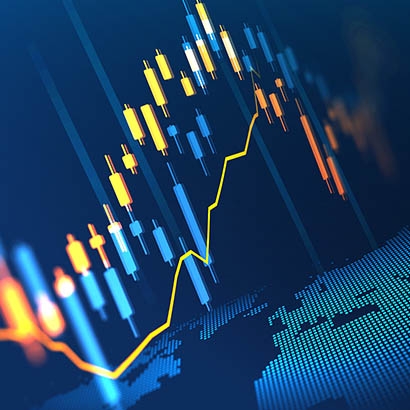While still an undersized market, bio-based and biodegradable plastic is here. Can bioplastics replace the petrochemical-based single-use plastics that litter oceans and landfills?
As the drive intensifies to make the ubiquitous plastic water bottle and beloved plastic straw more eco-friendly products, chemical companies now have a mandate from industries, consumers and governments to develop alternatives to traditional, nonbiodegradable plastic.
Although the amount of plastics produced from bio-based materials is currently small, bioplastics production has increased tenfold from 2007.
Bioplastics, made from starches, vegetable oils and other renewable sources that break down in a natural environment, could be the solution. A recent report from Morgan Stanley Research found that only 1% of global plastics are currently produced from bio-based materials—and these are still priced at a premium to petrochemical alternatives.
However, a growing focus on sustainability by global food, beverage and retail companies suggests that there may be a willingness to pay for "green" labelling, at least in some product ranges. While this early-stage field is hardly crowded, many plastics manufacturers are ready to focus on innovative solutions to small format single-use plastic.
Reduce, Reuse, Recycle … Renew?
Bioplastics aren’t a homogenous group, but a family of materials that contain a minimum amount of bio-based polymers. Some bioplastics are created using bio-based sources like sugar cane, corn or castor oil, while others are engineered plastics. Some are biodegradable and break down into water, carbon dioxide and other biomass, but some are bio-based, but not biodegradable. Finally, some bioplastics are both bio-based and biodegradable. It’s a complex area.
In 2017, the worldwide production capacity for bioplastic stood at slightly more than two million metric tons. Some of these bioplastics are bio-based versions of existing polymers; others are new creations. Although the amount of plastics produced from bio-based materials is currently small, bioplastics production has increased tenfold from 2007.
“Industry forecasts project annual growth of 3.5% in 2017-2022, but we see the possibility for outperformance due to the increased focus on plastic strategies by corporates, governments and consumers," says Jessica Alsford, Head of Global Sustainability Research at Morgan Stanley. “With just over half of bioplastics currently being used for packaging, there is still demand. And we see this coming from companies who have a clear strategy to reduce their carbon footprint and sell 'greener' products."
As further evidence that companies are willing to invest in the use of more eco-friendly plastics, Alsford cites the 2018 UK Plastics Pact signed by several corporations, government bodies and other associations which aims to have all plastic packaging be reusable, recyclable or compostable by 2025.
In addition, several countries and cities have passed legislation banning or limiting traditional single-use nonbiodegradable plastic products, like shopping bags and straws.
Slow Road to Being Green
At present, any full-scale switch to bioplastics faces challenges, the first of which is cost. “Bioplastics are currently more expensive than their petrochemical equivalents, and this needs to change for mass-scale adoption," Alsford says.
One reason: Traditional plastics manufacturers typically use naphtha and ethane, both sourced through the oil and refining industry in a supply chain and development process that hasn’t changed in decades. Bioplastics production, however, requires a greater variety of feedstocks and a complex manufacturing process. As a result, a bottle made with bioplastics could cost as much as 50% more than its current equivalent. A second concern is speed of development. It takes years, if not decades, to refine the production of new polymers to a commercial scale.
Finally, there is the issue of consumer awareness. Only about 43% of bioplastics produced last year was independently biodegradable. For the rest, industrial composters would be required to decompose the material—which means educating consumers on the correct methods of disposal and developing the logistics for proper disposal. If some bioplastics were placed in traditional recycling bins, not only would they fail to disintegrate, they could contaminate entire batches of recycled plastic.
Despite these challenges, Alsford says public opinion is helping motivate plastics manufacturers to find solutions. “We see bioplastics as one part of the plastics solution. As producers focus on development, recycling infrastructure, innovation in truly biodegradable plastic and improved consumer education we’re getting closer to a world in which the plastic economy is much more sustainable.”
For Morgan Stanley Research on the potential of green hydrogen, ask your Morgan Stanley representative or Financial Advisor for the full report, “Bioplastics: A Solution for Single Use Plastic?" (Sept. 19, 2018). Plus, more Ideas from Morgan Stanley's thought leaders.



